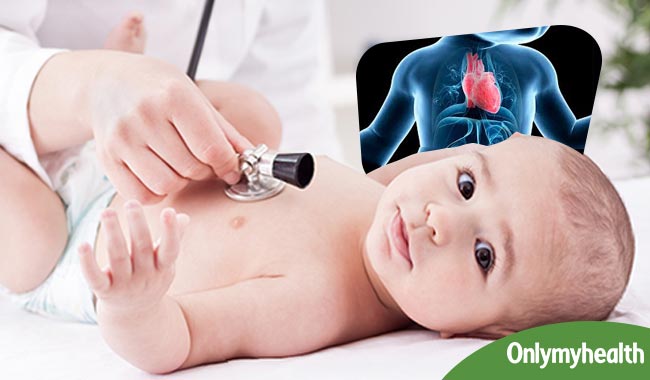
Tetralogy of Fallot is a rare, complex congenital heart defect. A congenital heart defect is a problem with the heart's structure that's present at birth.
Tetralogy of Fallot involves four heart defects:
Table of Content:-
- A large ventricular septal defect (VSD)
- Pulmonary stenosis
- Right ventricular hypertrophy
- An overriding aorta

Also Read: What is Tetralogy of Fallot?
Together, these four defects mean that not enough blood is able to reach the lungs to get oxygen, and oxygen-poor blood flows out to the body.
Doctors don't know what causes most cases of tetralogy of Fallot. Certain conditions or factors that occur during pregnancy may raise your risk for having a child with tetralogy of Fallot. Heredity and some genetic disorders also may play a role in causing this condition.
An important sign of tetralogy of Fallot is cyanosis. Cyanosis is a bluish tint to the skin, lips, and fingernails. Other signs and symptoms include a heart murmur, delayed growth and development, and clubbing. Clubbing is the widening or rounding of the skin or bone around the tips of the fingers.
Babies who have unrepaired tetralogy of Fallot sometimes have “tet spells.” A tet spell occurs when the oxygen level in the blood suddenly drops. This causes the baby to become very blue. He or she also may have trouble breathing, become very tired and limp, not respond to a parent’s voice or touch, become very fussy, or lose consciousness.
Doctors diagnose tetralogy of Fallot based on a baby’s signs and symptoms, a physical exam, and the results from tests and procedures. Signs and symptoms of the heart defect usually occur during the first weeks of life.
Tetralogy of Fallot must be repaired with open-heart surgery, either soon after birth or later in infancy. The goal of surgery is to repair the four defects of tetralogy of Fallot so the heart can work as normally as possible.
Surgery involves widening or replacing the pulmonary valve and enlarging the passage from the right ventricle to the pulmonary artery. This improves blood flow to the lungs. Surgeons also close the VSD with a patch. The patch stops oxygen-rich and oxygen-poor blood from mixing between the ventricles. Fixing these two defects resolves problems caused by the other two defects.
Some babies who are very small or weak have a temporary procedure that improves blood flow to the lungs and gives the baby time to grow and get strong enough for the full repair.
Advances in treatment mean that most children who are born with tetralogy of Fallot survive to adulthood. However, these children need lifelong care from specialists to stay as healthy as possible.
Teenagers and adults who had surgery to repair tetralogy of Fallot may have long-term heart problems, such as heart function problems, arrhythmias (irregular heartbeats), or problems resulting from the original repair. These problems are treated with medicines, procedures, and surgery.
Read more articles on Heart Health.
For more such articles, Download OnlymyHealth App.
How we keep this article up to date:
We work with experts and keep a close eye on the latest in health and wellness. Whenever there is a new research or helpful information, we update our articles with accurate and useful advice.
Current Version